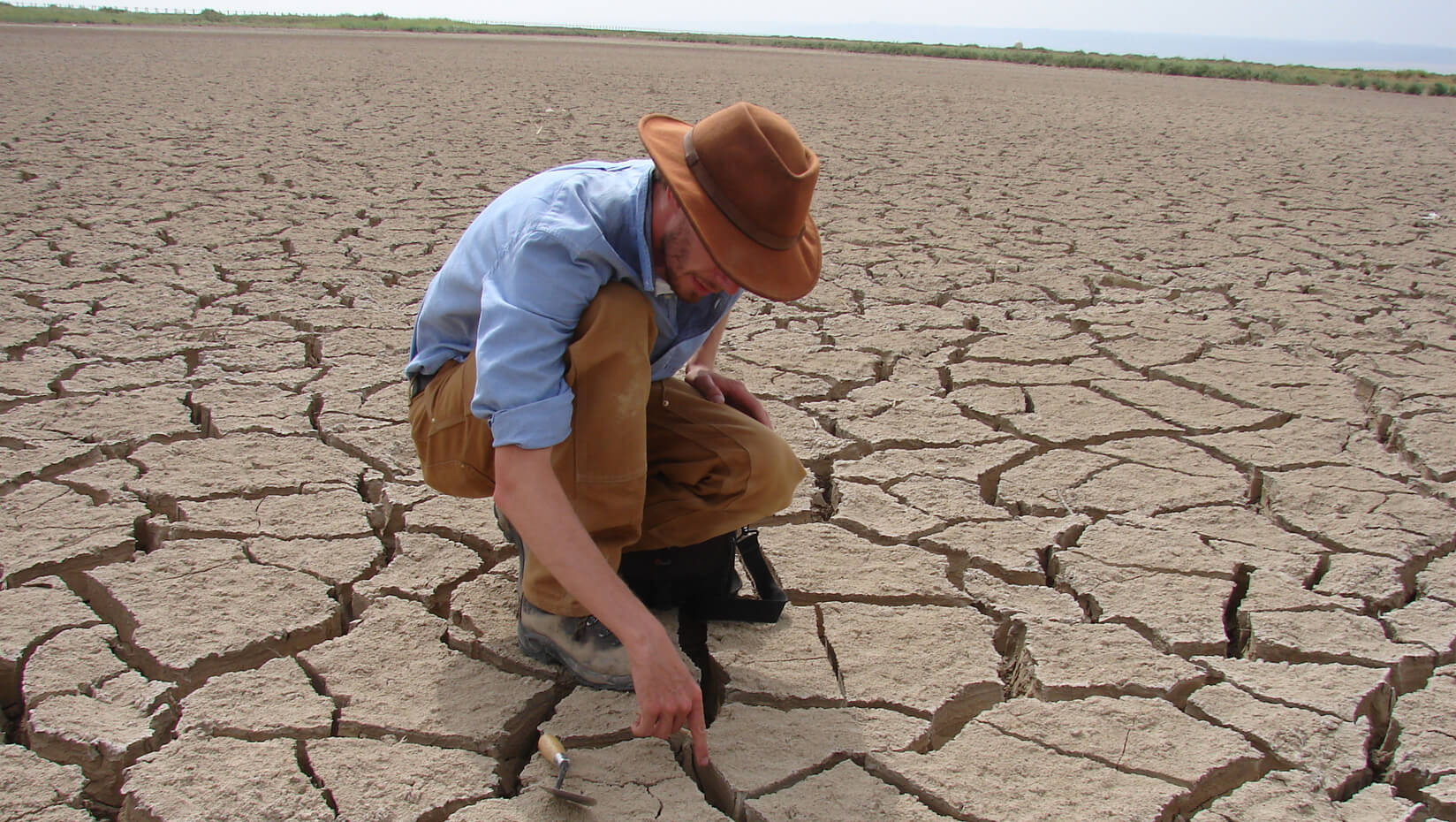
Climate change and the rise of the Mongol Empire
Could the rise of the Mongol Empire, the greatest land empire ever on Earth, have been linked to climate change?
Aaron Putnam thinks so.
In 2010 and 2011, Putnam, previously at Columbia University and now an assistant professor in the School of Earth and Climate Sciences and the Climate Change Institute at the University of Maine, traveled to the Tarim Basin in northwestern China to develop a record of how quickly the mountain glaciers of the Tien Shan retreated at the end of the last ice age.
The basin, which includes the Taklamakan and Lop deserts, is twice the size of the U.S. Great Basin.
Putnam, a UMaine alumnus, was accompanied by his father, David, an archaeologist and climate scientist at UMaine Presque Isle.
The interdisciplinary team also included researchers from the Lamont-Doherty Earth Observatory of Columbia University; University of New South Wales; China Meteorological Administration; University of Nevada, Reno; the Swiss Federal Institute of Technology; University of California, Irvine; and Xi’an Jiaotong University.
“My broad goal is to unearth the record of past climate to decipher how the climate system responds to forcing factors, such as atmospheric CO2, and under what circumstances the climate system could jump abruptly,” said Putnam.
During their travels in the Taklamakan Desert — the second largest shifting-sand desert in the world located in northwest China — they found unusual sediments.
They discovered stands of dead, water-loving trees, as well as sediments that were deposited by water.
Nestled between China’s Kunlun and Tian Shan mountains, approximately 85 percent of the Taklamakan Desert has little to no vegetation.
“We could tell right away that the region had seen extraordinary hydroclimatic shifts, so we set about applying 14C and tree-ring dating to determine when the region was significantly wetter than today,” said Putnam, whose findings were recently published in the journal Quaternary Science Reviews.
They collected wood and bivalve shell samples from the Taklamakan Desert and the Lop Desert, which historically was the site of a large lake known as Lop Nor.
Using radiocarbon dating methods, the researchers found that living trees, water-loving reeds, and a huge Lop Nor lake were present in what is now the desert as early as A.D. 1180 until at least as late as A.D. 1820.
Growing trees means a wetter-than-present climate in the basin and across much of the Asian desert belt.
Putnam and his collaborators concluded that the spread of the Mongol Empire from A.D. 1206 to A.D. 1241 was coeval with the early phase of the Little Ice Age glacier expansion in northern middle latitudes, which impacted atmospheric circulation patterns, water balance and the spread of grazing land which fueled Mongol conquests across Eurasia.
The paper suggests a variety of ways in which the wetting of the interior Asian deserts at the onset of the Little Ice Age, which was Earth’s last cooling event, may have contributed to the rise of the Mongol Empire.
Wetter conditions may have fueled military conquests by providing “greener” mid-latitude Asian deserts, producing more food resources for the cavalry horses.
The researchers also suggest that the southward expansion of the grasslands in response to colder, wetter conditions beginning in the late A.D. 1100s helped provide food for the horses that the cavalry relied on for transportation across the Eurasian deserts.
“Given that the Mongol rise was fueled by horsepower, and that horses are fueled by grass, and that grass requires water to grow, I do think that climatic factors may have played an important, if not essential role in the spread of the Mongol Empire,” said Putnam.
The researchers suggest that the southward shift of interior Asian ecological zones may have caused a southern shift of pastoralists. Prolonged snow and ice cover at the onset of the Little Ice Age could have resulted in a southern migration for pastoralists.
Since the late 19th century, drying in the Taklamakan and Lop deserts has coincided with overall diminution of water across much of the Asian desert belt. Lowering of the Tarim Basin water table over the past century has accompanied climatic warming.
Although Putnam’s research is working to understand the past, it could also shed light on the relationship between climate change, human culture and how water resources might respond to future atmospheric warming.
“Climate-society connections identified from the past can provide important lessons for our species as we enter into a world with over seven billion people, centralized food distribution systems, and a changing climate,” said Putnam, who holds UMaine’s George H. Denton Professorship of Earth Sciences.
“As global temperatures rise, moisture patterns will shift. Northern Hemisphere drylands are likely to expand northward. This will have important implications for water availability and food security on Earth’s most populated continents.”
Contact: Margaret Nagle, 581.3745
